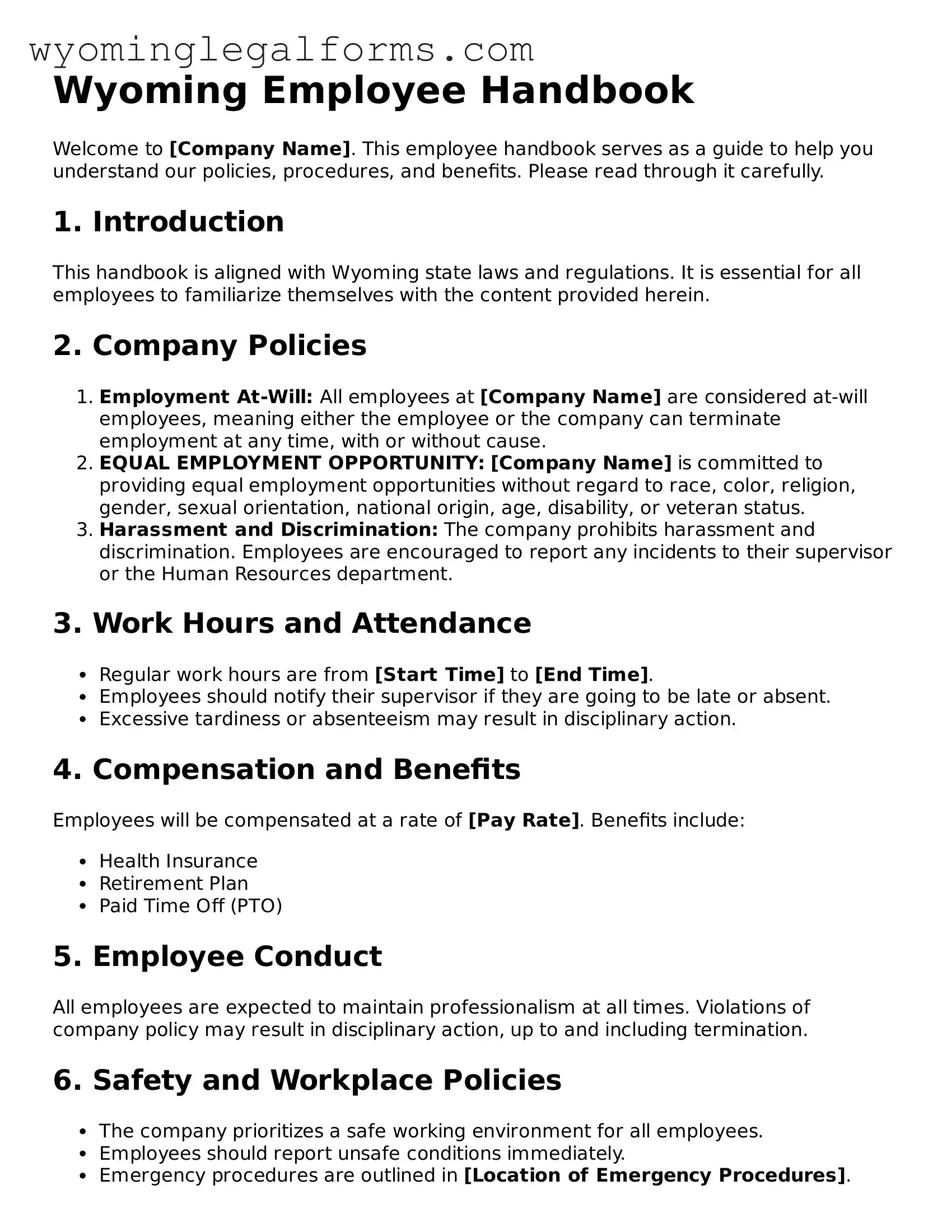What is the Wyoming Employee Handbook form?
The Wyoming Employee Handbook form is a document designed to outline the policies, procedures, and expectations for employees within a Wyoming-based organization. It serves as a guide for employees to understand their rights and responsibilities, as well as the company's rules and regulations.
Why is an Employee Handbook important?
An Employee Handbook is crucial for establishing clear communication between employers and employees. It helps set workplace standards, promotes consistency in policy enforcement, and can protect the company legally by demonstrating that employees have been informed of company policies.
What should be included in the Wyoming Employee Handbook?
The handbook should cover a variety of topics, including but not limited to: company mission and values, employment policies, code of conduct, anti-discrimination policies, benefits information, leave policies, safety procedures, and disciplinary actions. Tailoring the content to fit the specific needs of the organization is also recommended.
Is it necessary to have an Employee Handbook in Wyoming?
While it is not legally required to have an Employee Handbook in Wyoming, it is highly advisable. A well-structured handbook can help mitigate misunderstandings and disputes, ensuring that employees are aware of their rights and the company’s expectations.
How often should the Employee Handbook be updated?
Regular updates are essential to keep the Employee Handbook relevant. It is recommended to review the handbook at least annually or whenever there are significant changes in laws, company policies, or organizational structure. This ensures that employees receive the most current information.
Can an Employee Handbook be used as a contract?
An Employee Handbook is generally not considered a legally binding contract. However, certain statements within the handbook could imply a contractual obligation if they are presented in a way that suggests promises made by the employer. It is important to include disclaimers to clarify that the handbook is not a contract.
How can employees access the Employee Handbook?
Employers should provide easy access to the Employee Handbook, whether in print or digital format. It can be distributed during orientation, made available on the company intranet, or provided upon request. Ensuring that employees are aware of how to access the handbook is vital.
What should employees do if they have questions about the Employee Handbook?
Employees should feel encouraged to ask questions regarding the Employee Handbook. They can approach their supervisor, HR department, or designated personnel for clarification. Open communication fosters a better understanding of the policies and promotes a positive workplace culture.
Can the company enforce policies outlined in the Employee Handbook?
Yes, companies can enforce the policies outlined in the Employee Handbook, provided that they are clear, consistent, and communicated effectively to all employees. Enforcement should be fair and equitable to maintain trust and compliance within the organization.
